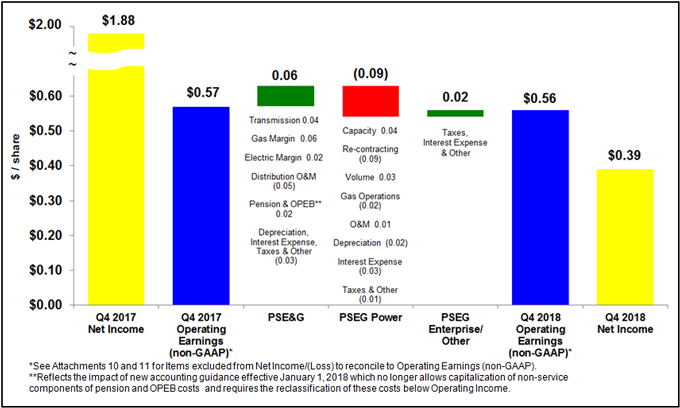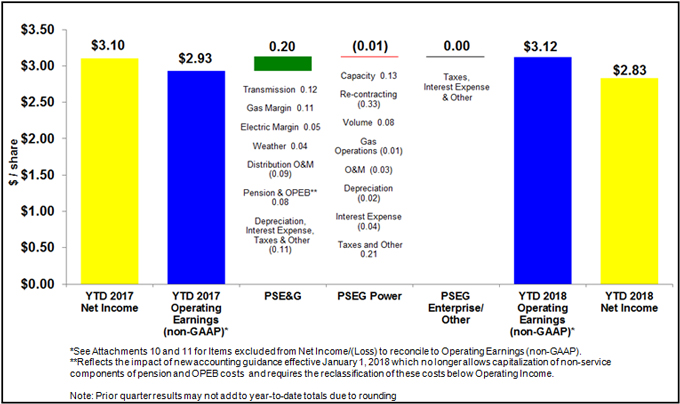Management believes the presentation ofnon-GAAP Adjusted EBITDA for Power is useful to investors and other users of our financial statements in evaluating operating performance because it provides them with an additional tool to compare business performance across companies and across periods. Management also believes thatnon-GAAP Adjusted EBITDA is widely used by investors to measure operating performance without regard to items such as income tax expense, interest expense and depreciation and amortization, which can vary substantially from company to company depending upon, among other things, the book value of assets, capital structure and whether assets were constructed or acquired.Non-GAAP Adjusted EBITDA also allows investors and other users to assess the underlying financial performance of our fleet before management’s decision to deploy capital.Non-GAAP Adjusted EBITDA excludes the same items as ournon-GAAP Operating Earnings measure as well as income tax expense, interest expense and depreciation and amortization.
See Attachments 10 and 11 for a complete list of items excluded from Net Income in the determination ofnon-GAAP Operating Earnings andnon-GAAP Adjusted EBITDA. The presentation ofnon-GAAP Operating Earnings andnon-GAAP Adjusted EBITDA is intended to complement, and should not be considered an alternative to the presentation of Net Income, which is an indicator of financial performance determined in accordance with GAAP. In addition,non-GAAP Operating Earnings andnon-GAAP Adjusted EBITDA as presented in this release may not be comparable to similarly titled measures used by other companies.
Due to the forward looking nature ofnon-GAAP Operating Earnings andnon-GAAP Adjusted EBITDA guidance, PSEG is unable to reconcile thesenon-GAAP financial measures to the most directly comparable GAAP financial measure. Management is unable to project certain reconciling items, in particular MTM and NDT gains (losses), for future periods due to market volatility.
Forward-Looking Statements
Certain of the matters discussed in this release about our and our subsidiaries’ future performance, including, without limitation, future revenues, earnings, strategies, prospects, consequences and all other statements that are not purely historical constitute “forward-looking statements” within the meaning of the Private Securities Litigation Reform Act of 1995. Such forward-looking statements are subject to risks and uncertainties, which could cause actual results to differ materially from those anticipated. Such statements are based on management’s beliefs as well as assumptions made by and information currently available to management. When used herein, the words “anticipate,” “intend,” “estimate,” “believe,” “expect,” “plan,” “should,” “hypothetical,” “potential,” “forecast,” “project,” variations of such words and similar expressions are intended to identify forward-looking statements. Factors that may cause actual results to differ are often presented with the forward-looking statements themselves. Other factors that could cause actual results to differ materially from those contemplated in any forward-looking statements made by us herein are discussed in filings we make with the United States Securities and Exchange Commission (SEC), including our Annual Report on Form 10-K and subsequent reports on Form10-Q and Form8-K. These factors include, but are not limited to:
| | • | | fluctuations in wholesale power and natural gas markets, including the potential impacts on the economic viability of our generation units; |
| | • | | our ability to obtain adequate fuel supply; |
| | • | | any inability to manage our energy obligations with available supply; |
| | • | | PSE&G’s proposed investment programs may not be fully approved by regulators and its capital investment may be lower than planned; |
| | • | | increases in competition in wholesale energy and capacity markets; |
| | • | | changes in technology related to energy generation, distribution and consumption and customer usage patterns; |
| | • | | third-party credit risk relating to our sale of generation output and purchase of fuel; |
| | • | | adverse performance of our decommissioning and defined benefit plan trust fund investments and changes in funding requirements; |
| | • | | changes in state and federal legislation and regulations, and PSE&G’s ability to recover costs and earn returns on authorized investments; |
| | • | | the impact of any future rate proceedings; |
| | • | | risks associated with our ownership and operation of nuclear facilities, including regulatory risks, such as compliance with the Atomic Energy Act and trade control, environmental and other regulations, as well as financial, environmental and health and safety risks; |
| | • | | the impact on our New Jersey nuclear plants of the failure of such plants to be selected to participate in the Zero Emissions Certificate (ZEC) program or adverse changes to the capacity market construct; |
| | • | | adverse changes in energy industry laws, policies and regulations, including market structures and transmission planning; |
| | • | | changes in federal and state environmental regulations and enforcement; |
| | • | | delays in receipt of, or an inability to receive, necessary licenses and permits; |
| | • | | adverse outcomes of any legal, regulatory or other proceeding, settlement, investigation or claim applicable to us and/or the energy industry; |
| | • | | changes in tax laws and regulations; |
| | • | | the impact of our holding company structure on our ability to meet our corporate funding needs, service debt and pay dividends; |
| | • | | lack of growth or slower growth in the number of customers or changes in customer demand; |
| | • | | any inability of Power to meet its commitments under forward sale obligations; |
| | • | | reliance on transmission facilities that we do not own or control and the impact on our ability to maintain adequate transmission capacity; |
7


